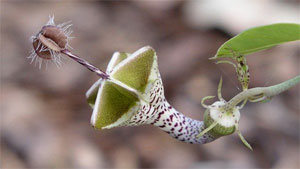May 2020 Environment
Sakshi Education
- Tigers and Tourism | 22nd Webinar Series
 22nd edition of Dekho Apna Desh Webinar Series was recently organized by the Ministry of Tourism. This time the webinar was titled ‘Tigers and Tourism’.
22nd edition of Dekho Apna Desh Webinar Series was recently organized by the Ministry of Tourism. This time the webinar was titled ‘Tigers and Tourism’.
The session was presented by Mr. Sandesh Kadur, an eminent wildlife conservation photographer and filmmaker, National Geographic Fellow, winner of BAFTA in photography and an EMMY nominee for outstanding cinematography.
What you need to know about Tiger population in India?
70% of world’s tiger population is found in diverse habitats of India with about 15 species of big cats presently existing in 50 reserves spread across the country. India with 50 tiger reserves in 18 states has over 80% of the global tiger population which stands at 3,159.
According to the latest tiger estimation report of 2018, India now has as many as 2,967 tigers in the wild, with more than half of them in Madhya Pradesh and Karnataka.
The range for the total tiger population in the wild is 2,603-3,346. The population has increased by nearly 33% since the last census in 2014 when the total estimate was 2,226.
The count has decreased drastically from 46 to 19 in Chhattisgarh.
In Odisha, it has been on a continual decline over the years and now stands at 28.
According to official records, the 24% mortality among tigers is due to poaching.
Madhya Pradesh showed the highest increase of 218 tigers, reaching an estimated 526, followed by Karnataka with 524.
The numbers have also increased in Uttarakhand (442), Maharashtra (312) and Tamil Nadu (264).
The tiger bearing habitats were divided into five landscape regions
Shivalik-Gangetic plains,
Central India and the Eastern Ghats,
Western Ghats,
North Eastern Hills and Brahmaputra Flood Plains
The Sundarbans.
No tigers were found in Buxa (West Bengal), Dampa (Mizoram) and Palamau (Jharkhand).
As per the government records, the total numbers have been increasing at a rate of 6% every year i.e., from 1,411 in 2006 to 2,226 in 2014.
India along with 12 other tiger range countries had committed to doubling the population of tigers in their respective countries by 2022, as part of the World Wildlife Foundation (WWF) programme Tx2.
- GoI launched five key initiatives to conserve biodiversity
Government of India launched five key initiatives towards conservation of biodiversity during the occasion of International Day for Biological Diversity 2020. The initiatives were launched by the Union Minister of Environment, Forest and Climate Change Prakash Javadekar.
The five initiatives are:
One of the initiatives is the Biodiversity Samrakshan Internship Programme. It was launched by the National Biodiversity Authority (NBA) and United Nations Development Programme (UNDP). The programme proposes to engage 20 students with postgraduate degrees for a period of one year through an open, transparent, online competitive process.
The World Wildlife Fund Model Conference of Parties (COP), including the younger generation, was launched. It will engage in imprinting humanity towards biodiversity.
UNEP Campaign on Illegal Trafficking of Endangered Species: Not all Animals Migrate by Choice initiative was launched.
The Wildlife Crime Control Bureau campaign called Not All Animals Migrate by Choice was launched.
A Webinar series titled "Biodiversity Conservation and Biological Diversity Act, 2002" was launched.
- MoRTH notified Emission norms for L7 category for BS-VI Vehicles
The Ministry of Road Transport and Highways has issued notification regarding the emission norms for L7 (Quadricycle) category for BS VI.
BACKGROUND:
Bharat stage (BS) emission standards are laid down by the government of India to regulate the output of air pollutants from internal combustion engine and spark-ignition engine equipment, including motor vehicles.
As mandated by the central government, vehicle makers must manufacture, sell and register only BS-VI vehicles from April 1, 2020.
The first emission norms were introduced in India in 1991 for petrol and in 1992 for diesel vehicles. Followed these, the catalytic converter became mandatory for petrol vehicles and unleaded petrol was introduced in the market.
Both BS-IV and BS-VI are unit emission norms that set the maximum permissible levels for pollutants that an automotive or a two-wheeler exhaust can emit.
As compared to the BS-IV, BS-VI emission standards are much stricter.
BS-VI fuel has lower sulphur content than BSIV, fuel.
The sulphur content in BS-VI fuel is five times lower (10ppm) as compared to sulphur content in BS-IV fuel (50ppm). And, the nitrogen oxide level for the BS-VI diesel engine and petrol engine will be brought down by 70% and 25%
Various vehicle categories in India?
L Category Vehicles: Motor vehicles with less than four wheels [but does include light four-wheelers]. It has further seven sub-categories form L1-L7.
M Category Vehicles: Vehicles having at least four wheels and used for the carriage of passengers (e.g., standard car with 2, 3, 4 doors). It has further three sub-categories form M1-M3.
N Category Vehicles: Power-driven vehicles having at least four wheels and used for the carriage of goods. It has further three sub-categories form N1-N3.
Category Vehicles: A trailer is an unpowered vehicle towed by a powered vehicle. It is commonly used for the transport of goods and materials. It has further four sub-categories form O1-O4.
T Category Vehicles: Agricultural and Forestry tractors
G Category Vehicles: Off-road vehicles
- New Freshwater fish called ‘SILVER FISH’ Discovered in Tamil Nadu
A new species of small freshwater fish of the family Cyprinidae has came up in Velankanni in Tamil Nadu.
The silver-hued fish has been christened Puntiussanctus — ‘sanctus’ is Latin for holy — after the popular pilgrim town.
New Silver Fish species?
The fish has been identified and named by Mathews Plamoottil, head of the Department of Zoology, BJM Government College, Chavara, in Kollam.
His research was funded by the Science and Engineering Research Board (SERB) of the Department of Science and Technology.
Encountered in a small waterbody in Venlankanni, Puntiussanctus is small, it grows to a length of 7 cm. It found use both as food and as an aquarium draw, Dr.Plamoottil said.
The Puntius species are known locally as ‘Paral’ in Kerala and ‘Kende’ in Tamil Nadu.
They are purely freshwater fishes.
Its physical characteristics included a protractible mouth, a pair of maxillary barbels (a sensory organ near the snout), 24-25 lateral line scales and 10 pre-dorsal scales.
The new fish is now deposited in Government of India museum (Zoological Survey of India) at Pune.
It has also been registered with ZooBank of the International Commission of Zoological Nomenclature, the official authority for naming animals.
- Cicadas, Species that lives Underground
A brood of periodical cicadas, noisy insects that breed underground for as long as 13-17 years are expected to emerge into some states on the east coast of the US this year.
BACKGROUND
Cicadas are insects that spend most of their lives underground and emerge from the soil mainly to mate.
The insects are found in the America’s as well as New Zealand and Australia.
There will be major outbreaks of periodical cicadas in 2020 and 2021.
There are three species of 17-year cicadas and three species of 13-year ones.
The name 13 and 17 year refers to the number of years that cicada nymphs take to reach adulthood. It is not clear why their development period is so long.
After emerging from the ground in billions, they shed their exoskeletons or outer skins to take their winged form.
The lifespan of adult ones is short, about two to four weeks during which time they feed relatively little and mate.
This year, the grouping dubbed Brood IX will emerge after spending 17 years underground, into states including Southwest Virginia, parts of North Carolina and West Virginia.
There is an expectation of the emergence of over 1.5 million cicadas per acre.
- Charru Mussels – Invasive Species in Kerala Waters
Charru mussel (Scientific name: Mytellastrigata), an invasive species native to the South and Central American coasts, is spreading quickly in the backwaters of Kerala.
BACKGROUND:
Mussel is a common name for numerous bivalve mollusks belonging to the marine family Mytilidae and to the freshwater family Unionidae. Mollusks are soft-bodied invertebrates of the phylum Mollusca, usually wholly or partly enclosed in a calcium carbonate shell secreted by a soft mantle covering the body.
Worldwide, they are most commonly found in cool seas.
In India, two species of marine mussels, green mussel (Pernaviridis), and the brown mussel, (P. indica) are found in the coastal areas.
Farming of green mussels is now established as a commercial practice in India.
The Charru mussel is native to the South and Central American coast.
Their colour varies from black to brown, purple or dark green.
They can survive in a range of salinity and temperature but cannot survive beyond 36 degree celcius.
Issue related to Charru Mussels?
The proliferation of Charu mussel poses a serious threat to the endemic species diversity of brackish water habitats of Kerala coast. This invasive species is forcing out other mussel and clam species in the backwaters and threatening the livelihoods of fishermen engaged in molluscan fisheries.
What is the possible reason for their invasion?
The invasion of Charru mussel may have been caused as they reached the Indian shores attached to ship hulls or as larval forms in ballast water discharges. (Ballast is the seawater that ships carry to improve stability.)
Further, another possible reason may be the Cyclone Ockhi which struck the region (South India, Sri Lanka, Maldives) in 2017 and may have sped up their invasion.
- Locust threat is bigger this year, warns monitor
The threat of locusts, which have invaded vast swathes of land in Rajasthan and entered neighbouring Madhya Pradesh, is bigger this year in comparison with the damage caused to standing crops in a limited area in 2019.
The tropical grasshoppers have been crossing over to India via Pakistan’s Sindh province since April 2020.
In Pakistan, locusts have destroyed crop in the cotton-producing belt of Sindh.
Since Pakistan’s anti-locust spraying in the deserts of Thar and Cholistan proved to be ineffective, huge swarms, aided by high-speed winds, have flown in to the Indian side of the Thardesert.
Locust Swarms:
Locust is an omnivorous and migratory pest and has the ability to fly hundreds of kilometres collectively.
It is a trans-border pest and attacks the crop in large swarms.
Found in Africa, the Middle East and Asia, they inhabit some 60 countries and can cover one-fifth of the Earth’s land surface.
Desert locust plagues may threaten the economic livelihood of one-tenth of the world’s human population.
Swarms of locusts in the desert come to India from Africa/Gulf/South West Asia during the summer monsoon season and go back towards Iran, Gulf & African countries for spring breeding.
In India, more than 2 lakh square kilometres of area comes under Scheduled Desert Area.
Pink immature adults fly high and cover long distances during day hours from one place to another along with the westerly winds coming from the Pakistan side.
Most of these pink immature adults settle on the trees during night and mostly fly during day.
The immature locust is very active and their mobility makes it difficult to control the swarm at one location and it takes 4 to 5 days of control at different locations to control a particular locust swarm.
Challenges:
As per FAO’s Locust Status Update, the current situation remains extremely alarming in East Africa where it is an unprecedented threat to food security and livelihoods.
New swarms will migrate to the summer breeding areas along both sides of the Indo-Pakistan border as well as to Sudan and West Africa.
Good rains are predicted along the Indo-Pakistan border that would allow egg-laying to occur.
This year, the locusts are immature and have crossed the India-Pakistan border soon after their birth.
The U.N. Food and Agriculture Organisation has warned of more attacks of locusts along both sides of the India-Pakistan border.
A bigger challenge is likely to emerge when the swarms flying over 20 districts in Rajasthan start breeding.
The locusts will start laying eggs after the onset of monsoon and continue breeding for two more months, with new insects being born during the growth phase of the Kharif crops.
- Saharan Cheetah filmed for the First time in Decades
For the first time in decade, an Algerian naturalist has filmed a Saharan cheetah, a subspecies listed as critically endangered on the IUCN Red List.
The animal was spotted in the Hoggar Mountains national park in the vast country’s desert south
Key Takeaways
The Northwest African cheetah (Acinonyx jubatus hecki), also known as the Saharan cheetah, is a cheetah subspecies native to the Sahara and the Sahel.
It is listed as Critically Endangered on the IUCN Red List.
The subspecies was last seen in the Hoggar Mountains in 2008-10 when four individuals were recorded by camera traps.
BACKGROUND:
The Northwest African cheetah (Acinonyx jubatus hecki), also known as the Saharan cheetah, is a cheetah subspecies native to the Sahara and the Sahel.
It is listed as Critically Endangered on the IUCN Red List.
In 2008, the population was suspected to number less than 250 mature individuals.
The Saharan cheetah’s range is now limited to isolated pockets across the Sahara and Sahel from Mali in the west to the Central African Republic in the east.
The subspecies was last seen in the Hoggar Mountains in 2008-10 when four individuals were recorded by camera traps.
In 2012, the International Union for Conservation of Nature estimated the remaining population in Algeria at just 37 individuals.
Cheetahs can subsist without direct access to water, obtaining water indirectly from the blood of their prey.
The Cheetahs in the Sahara, where daytime temperature goes upto 40 degrees Centrigrade, exhibit several behavioral adaptations to this harsh climate. These adaptations includes:
They are predominantly nocturnal and active between sunset and early mornings;
They travel larger distances.
Occur at a lower density than cheetahs living in savannas.
- A new species discovered on Twitter, named after Twitter
 Ana Sofia Reboleira, biologist and associate professor with the University of Copenhagen’s Natural History Museum of Denmark, was scrolling though Twitter when she stumbled upon a photo of a North American millipede (Cambala annulata).
Ana Sofia Reboleira, biologist and associate professor with the University of Copenhagen’s Natural History Museum of Denmark, was scrolling though Twitter when she stumbled upon a photo of a North American millipede (Cambala annulata).
It was as normal of a millipede photo but when looked closely she found something no one else did and it was the fungus.
Troglomyces twitteri:
Troglomyces twitteri, belongs to an order called Laboulbeniales — tiny fungal parasites that attack insects and millipedes.
They are also known by the common and more familiar name, labouls.
It look like tiny larvae and live on the outside of host organisms; in this case, on the reproductive organs of millipedes.
They typically do not kill their hosts, although they may impair host fitness if the level of infestation is high.
Laboulbeniales were first discovered in the middle of the 19th century.
Foundational work on the Laboulbeniales was completed by the American mycologist Roland Thaxter (1858–1932).
- Pinanga Andamanensis | A Rare Palm from Andamans
Recently, a rare palm, Pinanga andamanensis, has been successfully cultivated at Jawaharlal Nehru Tropical Botanic Garden and Research Institute (JNTBGRI) based at Palode, Thiruvananthapuram (Kerala).
Pinanga andamanensis
It is a rare palm endemic to South Andaman Island. Its entire population of some 600 specimens naturally occurs only in a tiny, evergreen forest pocket in South Andaman’s Mount Harriet National Park.
Endemic species are those plants and animals that exist only in one geographical region.
The name is derived from ‘Penang’, the modern-day Malaysian state. Penang itself has its origins in Pulau Pinang which means Island of the Areca Nut Palm.
It has strong resemblance with the areca palm tree (widely used for bright interiors).
It has a small gene pool which means the species is vulnerable to natural calamities such as cyclones, earthquakes.
JNTBGRI scientists term it a critically endangered species and one of the least known among the endemic palms of the Andaman Islands.
Thiruvananthapuram has been referred as its second home as the species has started flowering in this Institute.
JNTBGRI will resume seed germination experiments for mass multiplication as part of the conservation strategy.
- Ecologically Sensitive Areas of Western Ghats
In a recent interaction between Union Minister of Environment, Forest and Climate Change and Chief Ministers of six states through a video conference, issues relating to notification of Ecologically Sensitive Area (ESA) pertaining to Western Ghats were discussed.
These six states include Kerala, Karnataka, Goa, Maharashtra, Gujarat and Tamil Nadu.
What are Ecologically Sensitive Areas (ESA)?
Eco-Sensitive Areas (ESAs) are the areas located within 10 kms around Protected Areas, National Parks and Wildlife Sanctuaries. These are notified by the Ministry of Environment, Forest and Climate Change (MoEFCC) under Environment Protection Act 1986.
The basic aim is to regulate certain activities around National Parks and Wildlife Sanctuaries so as to minimise the negative impacts of such activities on the fragile ecosystem encompassing the protected areas.
How did Ecologically Sensitive Areas come up?
The government had constituted a High Level Working Group under the Chairmanship of Dr. Kasturirangan in order to conserve and protect the biodiversity of Western Ghats while allowing for sustainable and inclusive development of the region.
As per of the recommendations by the Committee, few identified geographical areas falling in the six States of Kerala, Karnataka, Goa, Maharashtra, Gujarat and Tamil Nadu are to be declared as Ecologically Sensitive Areas.
The Committee recommended to bring just 37% of the Western Ghats under the Ecologically Sensitive Area (ESA) zones — down from the 64% suggested by the Gadgil Committee report.
- Western Ghats Ecology Expert Panel or “Gadgil Committee”
The Gadgil Committee headed by ecologist Madhav Gadgil also known as the Western Ghats Ecology Expert Panel (WGEEP) was set up by the government in 2011.
The committee recommended that all of the Western Ghats be declared as the Ecological Sensitive Areas (ESA) with only limited development allowed in graded zones.
The panel had classified the Western Ghats into Ecologically Sensitive Areas (ESA) 1, 2 and 3 of which ESA-1 is high priority, almost all developmental activities (mining, thermal power plants etc) were restricted in it.
It specified that the system of governance of the environment should be a bottom to top approach (right from Gram sabhas) rather than a top to bottom approach.
It also recommended the constitution of a Western Ghats Ecology Authority (WGEA), as a statutory authority under the Ministry of Environment and Forests, with the powers under Section 3 of the Environment (Protection) Act, 1986.
The report was criticized for being more environment-friendly and not in tune with the ground realities.
- Study of flowering plant endemism of Northern Western Ghats highlights the importance of conserving plateaus
 Scientists at the Agharkar Research Institute (ARI), Pune have come up with plant data of the Northern Western Ghats which indicates that plateaus should be prioritized for the conservation of the Northern Western Ghats.
Scientists at the Agharkar Research Institute (ARI), Pune have come up with plant data of the Northern Western Ghats which indicates that plateaus should be prioritized for the conservation of the Northern Western Ghats.
Highlights:
The data said that the plateaus and the cliffs that harbour most of the endemic species and increase their importance in conservation plans.
Northern Western Ghats produce 181 local endemic plant species, including four monospecific genera.
It was also found that a majority of the endemic species are therophytes, which complete their life cycle in a short period during monsoon.
The northern part of the Western Ghats of India, which is a biodiversity hotspot, along with the Konkan region, is considerably different from its southern and central counterparts on account of lesser precipitation and extended dry season.
The study also said that the Northern Western Ghats is the region of rapid diversification of specific herbaceous endemic genera like Ceropegia, Glyphochloa, Dipcadi, and Eriocaulon.
The scientists have many other estimates about the species that are endemic to the region, and the understanding of habitats, seasons, and plant distribution is limited.
The scientists also suggested that it is necessary to complete the IUCN threat status assessment on priority, which is underrepresented for the region.
Published date : 22 May 2020 12:54PM



















